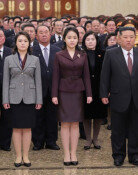[Opinion] Korean IT Workers at Work Overseas
[Opinion] Korean IT Workers at Work Overseas
Posted December. 06, 2005 06:47,
The biggest issue concerning this years job market has been increasing competition. There were increasing numbers of companies that saw competition rates of 200 to one at recruiting events. In the case of public corporations, called godsend workplaces in terms of job security and salary, 35 of them which had new hires this year witnessed an average competition rate of 138 to one, with many of the applicants having masters and doctorate degrees and a variety of certificates. Reportedly, 90 percent of job seekers are stressed and 40 percent are suffering from insomnia because of the difficulty in finding a job.
Against this backdrop, it is fortunate that at least half of those who were employed this year found a job in a workplace they had hoped for.
In the IT sector, more and more job seekers wish to be employed overseas, including the U.S., Australia, Sweden and Japan. Japan is planning to secure 500,000 IT workers by 2010, with 50,000 of them from overseas. Under the program, 300 to 400 Koreans have been employed annually. Almost all the graduates from a Korean IT training center land a job. Those who are hired through an agency reportedly receive three million yen (approximately 26 million won) in annual salary. Others are employed as contract workers. If they become regular workers, they can be assigned to important projects with a greatly increased salary.
The IT Master Course run by the Korea International Trade Association (KITA), which helps trainees find a job in Japan, boasts an employment rate of 99.9 percent. Its entire ninth batch of graduates, or 93 persons, who will complete the course next week, have been employed, and 88 of them found jobs in Japan. A training course by KITA is famous for hard training similar to what high school seniors who are preparing to take a university entrance examination go through. A KITA course teaches IT field work and foreign languages 10 hours a day with home assignments, tests, and projects continuing all year long. The association includes what Japanese corporations want in its curriculum. About 15 percent reportedly drop out of the course due to the hard training.
The IT course does not welcome those who seek a job in Japan just because it is hard to find a job in Korea, and because Japanese companies offer higher salaries than their Korean counterparts. As the training course requires one year and more than four million won, plus some additional money to settle down in Japan, the course is for those who intend to invest at least 10 years. Furthermore, one should be careful of the possibility of being shortchanged in terms of working conditions or allowances if one goes to work in Japan through an unreliable education institution.
Hong Kwon-hee, Editorial Writer, konihong@donga.com







